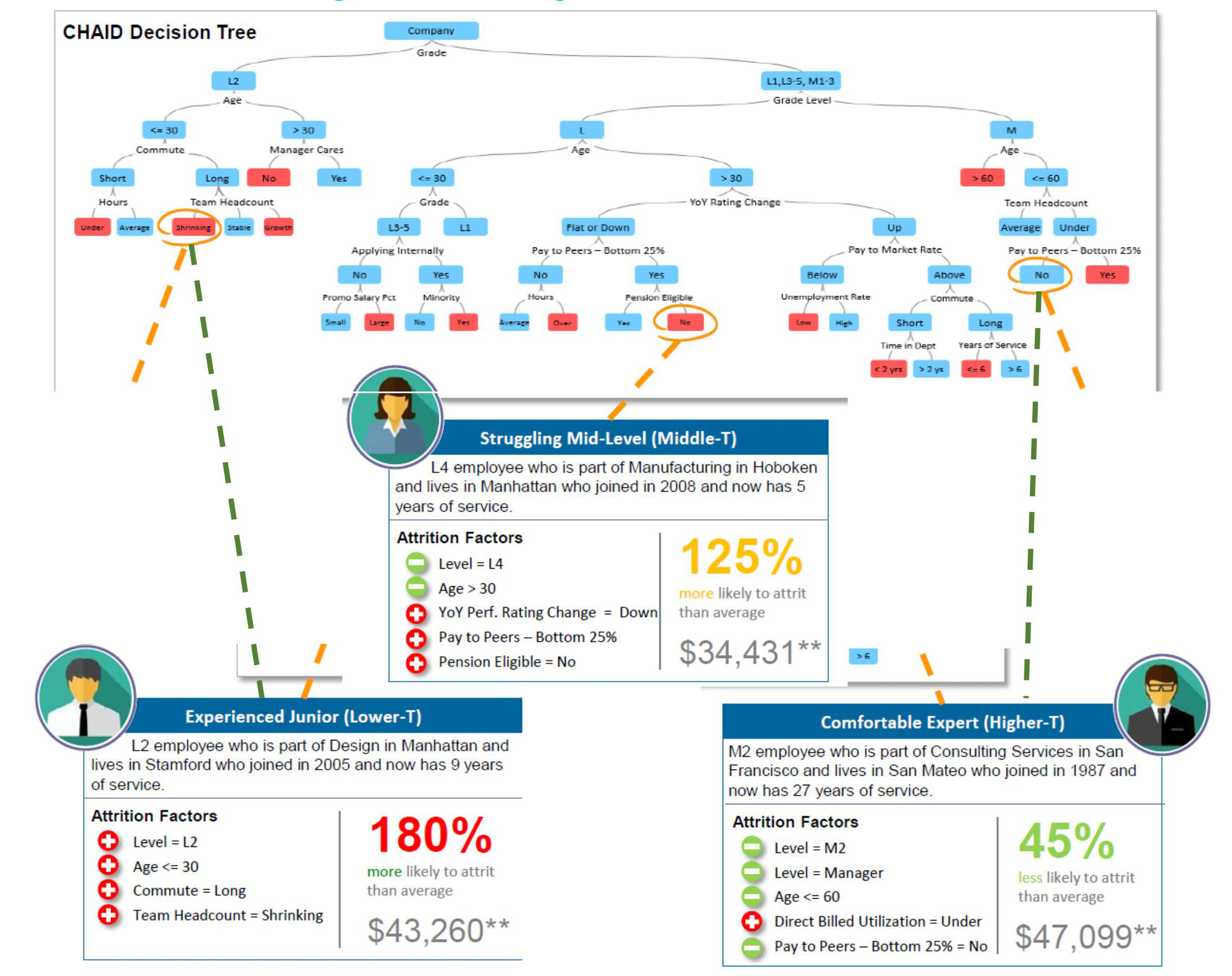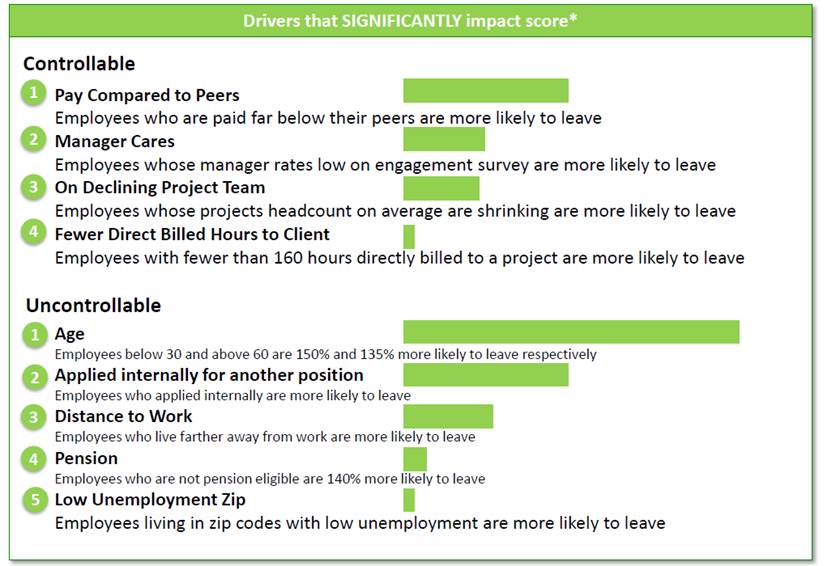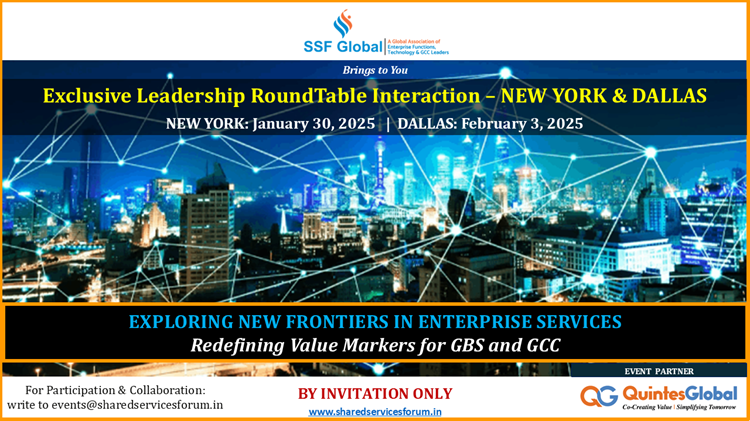
Would you like to start a conversation with other industry leaders to brainstorm a challenge or to just know more on a particular topic?
Engage in online discussions with your Peers
Start NowDesigning strategies around process management using ERPs, workflow tools and now automation and intelligence has occupied the forefront attention of all business managers in professionally managed companies. Process Management has now evolved as a defined science with several operational models and theories promulgated to understand and implement it. Unfortunately little attention, if any, is given to workforce management as a scientific field of study. If the people of the organization are considered the most strategic assets of the company, it stands to reason that planning for their deployment too should be done very carefully. A researched and scientifically implemented workforce planning exercise empowers companies to shape the future of work by operationalizing predictions of changing workforce supply and enables appropriate talent management measures. A well designed workforce exercise is both a science and an art.
What happens when a company does not have the appropriate talent it needs to achieve its long term business objectives? The risks could be huge with both serious and long lasting implications. Such risks can broadly be categorized under three simple buckets:
- Operational Risks – These are the most obvious and visible risks. With poor workforce planning, commitments are likely to be missed; production and deliveries would falter.
- Financial Risks – As a fallout of the operational risks, revenue and reputation and reputation would be lost and certainly any new opportunities would have to be let go. This would also have a direct impact on the bottom line and shareholder value.
- Compliance Risk – not having the right talent at the right place at the right time can lead to legal and other more complicated implications.
In today’s corporate environment, the need to carry out Workforce Planning & Analytics professionally and scientifically is believed to be paramount and rates at par with Workflow Planning & Analytics.
An IBM study uncovered six primary drivers propelling organizations towards the use of talent analytics and workforce planning in organizations –

With a growing number of “millennials” in the workforce, who think and behave differently, …are not satisfied only with competitive compensation and job role, but want to contribute more to the company and society at large.
The study observed that retaining top talent is imperative due to unpredictable business demands and transformations, such as a shift to the “Digital” paradigm and continuous acquisitions & divestitures. It is also observed that such retention of talent is a continuous challenge, given the plethora of opportunities available in the market place.
With the growing number of “millennials” in the workforce, who think and behave differently, addressing employee engagement, too, will be challenging, as today’s employees are not satisfied only with competitive compensation and job role, but want to contribute more to the company and society at large.
Where does the Industry stand today?
Here are some key facts and statistics (quoted from reports of Fortune 500 organizations like IBM, Accenture, PwC, GE and others) –
- ~70% of US CEOs are worried about the availability of key skills to run their businesses.
- 55% of executives acknowledge that their organizations, at best, conduct scenario planning.
- 61% of executives agree that they are ill-prepared to change workforce skills and job mixes to transition to a digital business.
- According to Bersin & Associates, the majority of HR organizations are not prepared for workforce analytics and measurement. Over 60% self-identified themselves as “poor” or “behind” in workforce analytics. Only 6% identified themselves as excellent.
- 30% of executives see this uncertainty as an opportunity to create competitive advantage.
HR continually collects data and metrics – performance reviews, diversity metrics, compensation, etc. However, not all data is relevant. Having clean data is 80% of the battle won, as bad data leads to bad analysis and incorrect insights, and decisions based on such insights lead to sub-optimal performance. Ensuring clean data requires:
- Cleaning of bad legacy data using data Integrity tools,
- Automation to limit human errors in feeding data, and
- Clearly defined business rules shared throughout the organization
The task of analytics around workforce planning and staffing begins post this – with the objective being to forecast the right talent by looking forward – at the right capacity – to meet changing demands, now and in the long term. Most companies are not at the point where they can apply this science and its principles to its most optimal effect.
Roadmap
Before we talk about any solution to this industry problem, we need to understand the outcomes or Return on Investment expected from such a future-state talent optimization exercise. Most organizations have gone on record to mention the following objectives they want to achieve:
- A more efficient and effective workforce
- Cross skilling, or cross-pollination of talent
- Strategic and proactive talent management decisions
- Enhanced job satisfaction for the employees
- Provision of newer career options to employees around modern technologies such as Digital
- More focused training and development engagements
The big tectonic shift that future managers can bring about to change the workforce planning game, can be visualized as shown below –

Potential Solution
GE, one of the most admired companies in the world believes that leaders can optimize their workforce today to deliver maximum performance and has laid out the following steps that an ideal Workforce Planning process should entail –
- Evaluate and take an inventory of the current skills that will drive the company performance in the future update the current Inventory of skills that exist in the organization today
- Evaluate future headcount requirements based on corporate business drivers
- Evaluate future skills requirements based on business drivers
- Implement optimized mix of skills and experience
The leaders would be well advised to think of the following to ensure robustness and comprehensiveness of the exercise –
- What are the most important trends influencing the company’s growth?
-
What is the range of potential future scenarios that the company’s business strategy must
address? - What are the key goals that will determine success of the strategy?
- How will the strategy enable these goals?
- In which regions/ areas should one grow or contract to meet these business objectives?
- What will be the biggest challenge to meet the business goals?
-
How should the business mix of products, software and services change to meet these
challenges? - What are the key differentiators which provide a strategic advantage over competitors?
- What metrics will/ can be used to assess performance against plan?
A typical end to end solution view could be as in the image below –

Now that we have a sense of understanding of the basic requirements of a good Talent Management exercise within an organization, and the pitfalls to try and avoid, let us examine the different Workforce Planning models that can be built on the vast array of big data available.
Linear, Non-predictive Models
- Equilibrium or Ratio or Trend Models – These are simple extrapolated forecasts leveraging past data to create a trend of the future possibility. The biggest assumption here is that nothing changes in the organization’s environment. This extremely simplistic tool has limited utility and is mainly beneficial for short-range planning and status-quo issues. These models are non- probabilistic and non-predictive.
- Deterministic Models – These models consider events in fixed terms and are linear and predictable. In the world of HR and talent management, the best representation of such a model is the “career ladder”, the ladder representing a linear upward movement of an employee. Due to considerable differences between employees across various generations that work for modern enterprises today, the growth trajectory is anything but linear. Hence, this model has been largely discounted, with most organizations moving to the “career lattice”
Predictive Models
- Change Models – Herein, we introduce and mainly focus on elements like probability and regression analytics. These models are typically seen via the resource supply-chain technique of push/ pull. Push models are characterized by change in the future talent pool available – the changes are due to wastage or attrition of talent, new hiring and promotions. These are particularly well-suited to situations where promotion and wastage probabilities are equal. Pull models, on the other hand, work against the assumption that promotion and wastage can be controlled. In reality, most organizations take both assumptions simultaneously and work out a formula involving both the models.
Prescriptive Models
- Network Flow or Dynamic Systems Models – These models enable “what if” analysis and scenario planning. The analytics can be personalized at the individual level and is focused on predicting outcomes through interactions with other variables. In other words, it comes as near to real-life as possible. For example, in the specific case of succession management, what is the probability of a given employee, of a certain age, gender and profession, to retire? These Insights based models can be bolstered through the use of cognitive back-end engines on unstructured data.
- Optimization Models – As of today, it is the most complex of workforce planning tools available. It requires inputs from different streams like Finance, physical and human resources, and is not possible without a fully integrated software suite. Multiple statistical techniques are combined and usually partnered up with an organization’s overall strategic planning process. The models start off with the desired future-state and work backwards through simulations and scenarios to determine what needs to happen to achieve that future state.
In an example of Workforce Planning and Optimization (executed by IBM Corp) analytics was leveraged to provide optimal lever recommendations to minimize long term labour rate, given multiple constraints.



An iterative approach was deployed to generate an exhaustive set of hypotheses. New variables were continually added to enhance the predictive model.

As part of the modeling exercise, each employee’s probability of turnover was calculated for managers to prioritize those employees who need to be proactively prevented from leaving.


The organization learnt about several factors associated with attrition and the ones that were not. These insights had significant impact in influencing strategic level decision making.
* This list is only a sample set of drivers. Some drivers may impact attrition, but are not as significant as others
Drivers that Do Not Significantly Impact Attrition
Some Demographics Drivers
Gender, Ethnicity, Military Background, Change inWork Location, Local Unemployment Rate, Local Population, Housing Market Health
Career Velocity & Promotion Drivers
Time to Promotion, Time in Job Title
Program Drivers
Position, Clearance Level, Centre of Excellence
Some Compensation & Benefits Drivers
Salary Plan, Retirement Eligibility, Pay Above Market Maximum, Previous Year Salary Increase
Management Drivers
Manager Near Employees Location, Manger Grade, Manager Rating, Manager Generation
Performance Drivers
Performance Rating
Results from the model were checked for accuracy and validated against exit interview data, employee reviews and online reviews using text analytics.In the next example, it is evident that such models can serve as an HR organization’s expandable analytics platform and become more powerful and impactful as more data and data sources become available.

”I was tired of scrambling to find projects and received an offer closer to home.”
GLASSDOOR EXAMPLE
”Salaries are not as competitive as other positions. No job security once projects end.”

-
Engagement and Retention – programs specifically geared towards making the desired
incumbents more attracted towards their jobs and the company - Specialized hiring – brining in talent not possible to develop in-house in the available time.
-
Contingent workers – building infrastructure around alternative hiring, such as part-time
employees or fixed contract workers.
Post Workforce Planning Analytics
Once the analytics exercises are over, the leaders have to plan and execute the decided strategies based on the insights from analytics. There are multiple workforce optimization levers that leaders have at their disposal, each of which need to be used judiciously and wisely, guided by analytics insights. Some of the common ones could well be:
- Training interventions – to decide which new skills and behaviours are to be added
- Leadership programs – to develop the leaders to be future ready
- Global appointments, secondments and interchange agreements – between different units, divisions and locations
Even highly professionally run and cutting-edge companies are realizing that employees are far more important assets than even the most sophisticated equipment or software they may possess. The demands from an ever shrinking work force are increasing – both numerically as well as dimensionally. Workforce analytics that were hitherto done either mentally or at best, at the back of an envelope are thins of the past. Time has now come to consider this too as an equally important strategic business activity – one that can provide that elusive competitive advantage right away.
ABOUT THE AUTHOR

Anindya Ghosh is an Associate Partner & Global Watson Health Leader – Cognitive Business Decision Support at IBM India. He has 20+ years of global experience in the areas of Data Science and Cognitive / Artificial Intelligence, Market Research, Quality and Process Excellence in companies like IBM, American Express, Wipro, IMRB, Research International, Taylor Nelson Sofres, Monitor Consulting. His expertise lies in the domains of Life Sciences, Healthcare and Insurance. He was responsible for setting up of Advanced Analytics and Reporting COEs offshore from IBM for large global Life Sciences and Healthcare majors; and leads one of the major global Life Sciences accounts worldwide. Previously, he was the Global Markets leader for the Pfizer account.
He has co-authored a book on Workforce Planning and Analytics in collaboration with IIM- Ranchi and NHRD (Nov 2017); has patented “The Method and System for Training Watson to learn Meeting Keywords”; and has been a Speaker on various forums and topics like – Possibilities with Artificial Intelligence – in Oracle Open World in New Delhi (May 2017), Artificial Intelligence in Millennial Education – for the Bengal Chamber of Commerce and Industry, a Panelist at an event sponsored by Pearson Education on the future of Artificial Intelligence in education, a co- speaker in “World of Watson” event in Las Vegas on the topic – implementation of Clinical Decision Support system in China, etc. He is a visiting faculty on Data Science/ Artificial Intelligence in B-schools in Delhi, Bangalore and IIM Ranchi. Anindya is a Certified Six-Sigma Black-belt. He completed his engineering from IIT-BHU and MBA from IIM-Calcutta – premier technology and management schools in India and across the world.









